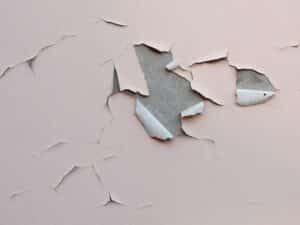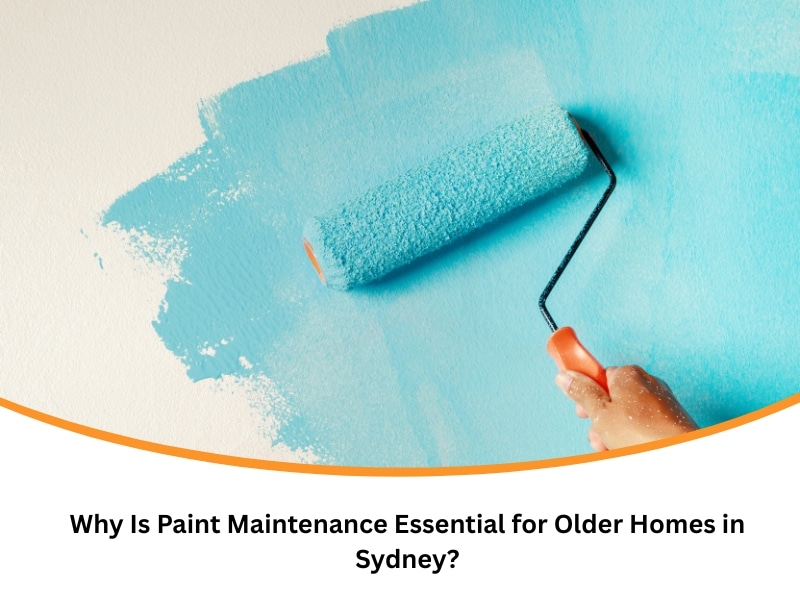Maintaining the paint on older homes in Sydney is not just about aesthetics—it’s about preserving the property’s structural integrity, protecting against the harsh elements, and improving the overall longevity of your home. For homeowners, especially in Sydney, regular paint maintenance can significantly enhance curb appeal and ensure the house remains safe and comfortable. This article will dive into why paint maintenance is particularly crucial for older homes and how it benefits the home and its occupants.
What is paint maintenance, and why is it different for older homes?
House painting maintenance involves regularly inspecting and touching up your home’s paintwork to prevent deterioration. The process is a bit more complex for older homes, given the age of the materials, the house’s exposure to the elements, and possible historical significance.
- Age of Materials: Older homes may have original wood, brick, or plaster materials that are more susceptible to weather damage and require more frequent attention.
- Weathering Effects: Paint on older homes can break down faster due to UV exposure, wind, and rain, leading to fading and cracking.
- Moisture Concerns: Older homes may have areas with poor ventilation, increasing the risk of mould and mildew growth under the paint surface.
- Lead Paint: Homes built before 1970 might contain lead-based paint, requiring specialised maintenance care to avoid health risks.
- Historical Preservation: Many older homes in Sydney may fall under heritage protection, which requires specific paint types or colours to maintain their historical accuracy.
Paint maintenance for older homes preserves your property’s integrity while maintaining its original character and charm beyond just repainting.
Why is paint maintenance crucial for Sydney’s climate?
Sydney’s climate can be quite harsh on buildings. With hot summers, occasional heavy rain, and salty coastal air, the paintwork of older homes can degrade quickly. Paint acts as a protective layer against these elements. Still, it also exposes your home to further damage when it wears away.
Condition | Effect on Paint | Cause/Trigger |
Summer heat | Fading, cracking | High temperatures |
Rain & humidity | Blistering, peeling | Moisture seepage |
Salt exposure | Surface degradation | Coastal salt air |
Uv damage | Colour fading | Sunlight/UV rays |
The environmental challenges Sydney’s climate poses necessitate regular paint maintenance to protect your home from the elements with our residential painting services.
Can paint maintenance prevent structural damage?
Paint maintenance does more than enhance the appearance of your home—it plays a key role in preventing structural damage. Cracked or peeling paint exposes your home to water damage, which can weaken its foundation over time.
- Waterproofing: Paint is a barrier against moisture, preventing it from seeping into the structure.
- Wood Rot: If exterior paint deteriorates, moisture can penetrate timber, leading to rot and decay, particularly in older homes with wooden elements.
- Rust Prevention: Maintaining a protective paint layer prevents rust from forming for homes with metal components (like gutters or window frames).
- Insulation: Well-maintained paint helps insulate your home, keeping it cooler in summer and warmer in winter, reducing wear on your home’s structure.
Regular paint maintenance can help prevent costly repairs by protecting your home from moisture, rot, and other structural issues.
Is old paint putting your health at risk?
One of the primary health concerns related to paint in older homes, particularly in homes built before 1970, is the potential presence of lead-based paint. If this paint is disturbed during maintenance or renovations, it can pose serious health risks.
- Lead Exposure: Lead poisoning is a significant risk in older homes, especially for young children and pregnant women. Lead can cause developmental issues, learning disabilities, and other serious health problems.
- Mould and Mildew: Neglected paint can trap moisture, leading to mould and mildew growth. These can cause respiratory issues, particularly for people with asthma or allergies.
- Chemical Fumes: Some paints contain volatile organic compounds (VOCs) that can contribute to air pollution and respiratory problems.
Failing to maintain the paint in your home, especially in older properties, can lead to health hazards, including serious health problems caused by lead exposure. To avoid these risks, it’s essential to take extra care when maintaining older homes.
What signs show your home needs paint maintenance?
It’s important to know the signs that indicate your home needs a touch-up or more extensive paint maintenance. Regularly inspecting your home can help catch issues early before they escalate.
- Fading Paint: If your paint looks dull or discoloured, it’s likely a sign that it’s no longer providing adequate protection.
- Cracking or Peeling: Visible cracks or peeling paint indicate that the protective layer has been compromised.

- Mould and Mildew: Discolouration or dark spots on the walls, especially in areas with high humidity, suggest mould or mildew growth.
- Chalking: Powdery residue on the paint’s surface can indicate that the paint has broken down and no longer provides proper protection.
- Blistering: Bubbles or blisters in the paint indicate trapped moisture beneath the surface.
These signs clearly indicate that your home’s paint needs maintenance to keep it in good condition and prevent further damage.
Which areas of the home need the most attention for painting maintenance?
Some areas of your home are more exposed to the elements and require more frequent paint maintenance. These areas should be inspected regularly to ensure they’re protected.
Area | Reason for Attention | Maintenance Tip |
Exterior walls | Constant exposure to weather | Regular repainting to protect surface |
Roof and eaves | Harsh weather conditions | Repaint to prevent wear and tear |
Windows and doors | Susceptible to deterioration (wood/metal) | Repaint frames to prevent damage |
Gutters and downpipes | Prone to rust (especially metal) | Touch up regularly to maintain protection |
Focus on these areas for paint maintenance to protect your home from the elements and maintain its condition.
How does paint maintenance protect your property?
Paint is a protective layer for your property, and regular maintenance ensures this protective barrier remains intact. Here’s how paint maintenance protects your home:
- Prevents Water Damage: A good coat of paint keeps water out, preventing issues such as dampness, rust, and wood rot.
- Protects Against Pests: Well-maintained paint can deter pests such as termites, which thrive in damp environments.
- Improves Curb Appeal: A freshly painted home looks well-maintained and inviting, improving its aesthetic appeal and potentially increasing its market value.
- Enhanced Longevity: Regular paint maintenance extends the life of your home’s structure by preventing wear and tear from the elements.
Maintaining your paint is essential to protecting your home’s value. With reliable paint maintenance solutions for Sydney homes, you can ensure it remains a safe, comfortable space for years to come.
Conclusion
Paint maintenance is essential for homeownership, particularly in older Sydney homes. It protects against harsh weather, prevents structural damage, ensures safety, and maintains aesthetic appeal. Regular upkeep enhances your home’s longevity, preserves its value, and provides a safe, comfortable environment for your family.
If you’re looking to maintain or refresh your home’s paintwork, Reach out to Sydney Paintmasters for all your painting needs.

